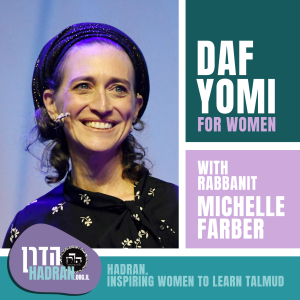
If one designated birds from one nest and found birds in front of the nest on Yom Tov instead of in the nest, they are forbidden because they may not be the ones he designated. Is it because when there is "majority" and "proximity", we follow the majority? Rava and Abaye explain the case - each in a different way, each showing that this is not a case where proximity is different than the majority. What does the mishna means when it says that if there are no more chicks in the area, then it can be assumed that what one finds is what was designated? Isn't it obvious?! Beit Shamai and Beit Hillel disagree on the matter of using a pestle on Shabbat for cutting meat, a permitted activity. Abaye derives from the mishna that only a pestle is forbidden by Beit Shammai, but a wooden anvil would be permitted. There is a slightly different version of Abaye’s opinion. According to the second version, Beit Shamai is not concerned that one will change one’s mind regarding the use of the anvil – however, this contradicts other cases where Beit Shami is concerned one will change one’s mind. What is the difference between the cases? How can one take care of the hide of an animal that is slaughtered on Yom Tov? Can one put it on the floor and people will trample on it? What can be done with the forbidden fats of the animal on Yom Tov? Is it possible to salt a few pieces of meat on a Yom Tov if you only need one for the holiday? Is it possible to remove shutters in a store on Yom Tov to sell items needed for the holiday? Is it possible to return them to their place after, to protect the goods? There is a dispute between Beit Shamai and Beit Hillel on the issue. Ulla counts three cases and Rechava adds a fourth in which something is allowed because of its beginning - in order for people to perform another mitzvah, such as to ensure people will slaughter animals and fulfill the mitzvah of Simchat Yom Tov. Why did Ulla have to indicate these cases - what was not clear in the mishnayot in which all these cases were mentioned? Why did Ulla not mention the case of Rehava? How did Rabbi Shimon ben Elazar understand differently the dispute between Beit Shamai and Beit Hillel regarding the shutters? And in which case did they agree - with/without a hinge? What kind of hinge?
More Episodes
 2023-12-21
2023-12-21
 2023-12-20
2023-12-20
 2023-12-19
2023-12-19
 2023-12-18
2023-12-18
 2023-12-17
2023-12-17
 2023-12-15
2023-12-15
 2023-12-15
2023-12-15
 2023-12-14
2023-12-14
 2023-12-12
2023-12-12
 2023-12-11
2023-12-11
 2023-12-10
2023-12-10
 2023-12-07
2023-12-07
 2023-12-06
2023-12-06
 2023-12-05
2023-12-05
 2023-12-04
2023-12-04
 2023-12-03
2023-12-03
Create your
podcast in
minutes
- Full-featured podcast site
- Unlimited storage and bandwidth
- Comprehensive podcast stats
- Distribute to Apple Podcasts, Spotify, and more
- Make money with your podcast
It is Free
- Privacy Policy
- Cookie Policy
- Terms of Use
- Consent Preferences
- Copyright © 2015-2024 Podbean.com





